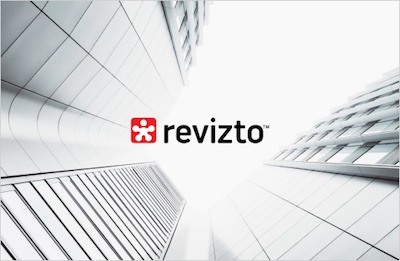The definition of 5D BIM and its benefits to the industry
The definition of BIM
Additionally, BIM allows for the creation of highly detailed and accurate 3D models that not only showcase the appearance of the building but also include important information about various aspects of its construction, such as materials used, structural elements, and mechanical and electrical systems. This information can be utilized throughout the entire lifecycle of the building, from the initial design and construction phases to ongoing maintenance and eventual renovation or demolition.
BIM also enables improved coordination and collaboration between different stakeholders involved in a project, including architects, engineers, contractors, and facility managers. This is achieved through the use of a shared digital platform that allows for real-time communication, coordination, and information sharing, ultimately leading to a more efficient and effective construction process.
Overall, BIM is a multifaceted and highly valuable tool that has the potential to revolutionize the construction industry and improve the quality, efficiency, and sustainability of building projects.
BIM dimensions
The adoption of BIM as a new approach to construction project management has been slow due to its fundamental differences from traditional approaches and the construction industry’s historical resistance to digitalization. However, the concept of BIM dimensions provides additional benefits and use cases beyond the basic 3D BIM approach, which is often described as a 3D CAD model with additional information attached to each object.
BIM dimensions range from 4D to 10D, each providing integration with a different field of work related to the project lifecycle. For example, 4D BIM adds time-based scheduling, while 5D BIM incorporates cost estimation and budgeting operations.
- 4D BIM – time and scheduling
- 5D BIM – cost and budgeting
- 6D BIM – sustainability and impact on the environment
- 7D BIM – facility management and maintenance
- 8D BIM – safety at different project stages
- 9D BIM – lean construction
- 10D BIM – industrialization of the construction
It is worth noting that the topic of BIM dimensions as a whole is incredibly complex, and the process of adopting different BIM dimensions is even more expensive and challenging than the original BIM adoption process. This is because every single BIM dimension relies on the “original” 3D BIM already being in use, and every BIM dimension includes all of the previous dimensions into it by default. As a result, the costs of implementing additional BIM dimensions are usually high, and the overall complexity of the process can be overwhelming.
5D BIM and the advantages of budgeting data in a BIM model
This kind of complexity is one of the biggest reasons why only 4D BIM and 5D BIM are getting any kind of widespread recognition and adoption at this point in time. 4D BIM includes scheduling to the entire BIM model, making it possible to predict project creation time frames in great detail, along with other advantages. On the other hand, 5D BIM further improves estimation by adding budget-related data to a BIM model, providing better project estimates, material consumption estimates, and more.
In a traditional project management approach, cost estimation was one of the most complex processes during the design stage, plagued with bottlenecks and issues, such as:
- The lack of any centralized collaboration or coordination efforts, resulting in the absence of any cost consistency
- The lack of visualization for the project in general, leading to inadequate decision-making
- The overall difficult process of tracking day-to-day project costs because of numerous outdated techniques and concepts that are used in the industry
- The lack of any cost estimation template, and the inability to create one, slowing down the entire process significantly
The benefits of 5D BIM
However, the addition of 5D BIM to the overall construction process changed the entire budgeting side of it quite drastically. Here are some of the most significant advantages of 5D BIM implementation:
- Better collaboration throughout the project lifecycle
The advantage of 5D BIM is somewhat similar to the overall advantage of BIM as a whole – with the addition of estimators and other personnel who work primarily on cost estimation and budgeting tasks. BIM allows for a much healthier collaborative environment within the project team, as everyone can work with the model at the same time, and all changes are recorded and taken into account, reducing the risk of miscommunication and potential issues down the road.
- Better quantity takeoffs
Quantity takeoff creation is often considered one of the most complex and challenging processes for estimators in the construction industry. It involves creating a list of materials and manual/automated labor required to complete the entire project. The traditional approach to this process is mostly manual, which can lead to miscalculations, human errors, and other issues.
5D BIM significantly improves this process and paves the way for eventually completely automated quantity takeoff creation. Currently, 5D BIM can automatically generate a bill of quantities (BOQ) based purely on the existing data from a BIM model, with no additional input. The time spent on generating a BOQ is now greatly reduced, giving estimators more time to be thorough in generating pricing models, assessing financial risks, and other important tasks.
- Faster material procurement
Since a significant part of budgeting and financial calculations become much easier and quicker with 5D BIM, it becomes easier to make more accurate and effective decisions related to material procurement. For example, stakeholders can receive bills of quantities and quantity takeoffs much earlier in the project creation process, speeding up the entire chain of events that lead to material procurement.
- Easier modification for quantity takeoffs
Getting back to the topic of quantity takeoffs, there is another significant advantage of 5D BIM worth mentioning, and that is the ability of a BIM model to be modified in real-time while recalculating every single parameter affected by the change. This allows for measurements and takeoffs to remain consistent and accurate for the entire project lifecycle. The same logic can also be used to update all the documents interconnected with a BIM model, such as schedules, estimates, and other types of data that estimators could use.
- Higher cost estimation accuracy
5D BIM incorporates both the quantity and price of each building component to generate a precise and accurate cost estimate for a project. The automation of this estimation process reduces the risks of miscommunication and mismanagement, resulting in fewer losses and reworks.
- More informed decision-making
The integration of BIM enhances transparency throughout the construction project and quicker budgeting/cost estimation processes provide more information for decision-makers such as architects to make informed decisions. Whether the decision is made by a contractor, subcontractor, or owner, it is transparent, fostering collaboration and minimizing the likelihood of miscommunication.
Difficulties with 5D BIM implementation
It is true that 5D BIM offers numerous benefits to the construction industry, but its adoption rates remain low due to several challenges. One of these challenges is the issue of risk exposure, which is similar to the challenges faced by the broader BIM approach. This challenge involves determining legal matters in the context of a cooperative environment such as BIM, including data ownership, access rights, and control rights. Additionally, since BIM is a highly collaborative environment, it can be challenging to assign accountability in case of errors, which creates uncertainty and discourages many companies from adopting 5D BIM.
The cost of implementing 5D BIM is not just monetary, but also in terms of time and effort. The initial training and education required for all stakeholders to effectively contribute to a 5D BIM model can be extensive and time-consuming. This results in longer project initialization times, which can lead to higher overall project costs for the owners. As a result, many project managers may be hesitant to adopt 5D BIM due to the significant investment required in terms of both time and money.
The construction industry, being one of the oldest industries, has established various industry standards over time, including both modern and outdated ones. However, the existing legacy standards for cost planning (albeit in just a few countries) are considered outdated, and the gap between that format and 5D BIM is so significant that there is no clear compatibility between the two. Attempting to use a legacy cost estimation format with modern 5D BIM systems is almost guaranteed to result in inaccurate cost estimates, at the very least.
It can be challenging for companies to integrate the different dimensions of BIM since there is no single centralized solution that can handle all these tasks in a single package. Each company that wishes to use the original BIM approach, combined with 4D BIM scheduling capabilities and 5D BIM cost estimates, would have to employ multiple different solutions, making it inconvenient and inefficient. This lack of a centralized solution leads to higher costs for companies and increased complexity, which can discourage some from adopting 5D BIM.
It is important to acknowledge that the construction industry is inherently risk-averse, especially given the large scale and high costs associated with projects. As a result, many decision-makers may be hesitant to invest significant resources in new technologies or processes, particularly if they involve significant upfront costs or require extensive training. Moreover, 5D BIM software can be quite complex, requiring a high level of expertise to use efficiently.
In some cases, individuals may need to learn the software from scratch, further lengthening and increasing the overall cost of the training process. While these challenges should not be ignored, it is important to recognize the potential long-term benefits of 5D BIM, including increased accuracy, efficiency, and collaboration, which can ultimately lead to improved project outcomes and reduced costs.
Conclusion
As the construction industry continues its digital evolution, collaborative platforms such as Revizto continue playing an important role in supporting complex BIM implementation workflows. It is common for modern BIM collaboration tools to include integrated modules for different aspects of project management, assisting teams with better understanding when it comes to project timelines and communication workflows. Information centralization capabilities from such tools help businesses reduce the necessity for several disconnected software solutions operating within the same infrastructure, providing a much more streamlined approach to construction projects of any size.
While the adoption of 5D BIM has been slowly increasing across the entire industry, there are many benefits that it can still offer in practically any construction environment. Improvements to cost estimation, quantity takeoff and material procurement make 5D a valuable technology for project managers who want to optimize their workflows and increase their efficiency. The initial implementation can be daunting from both time and resource perspectives, but the existence of a comprehensive BIM platform capable of supporting various project management dimensions can benefit the company a lot more in the long term. That way, businesses can realize the full potential of integrated BIM in construction projects.
Unlock seamless BIM collaboration — request your demo today


